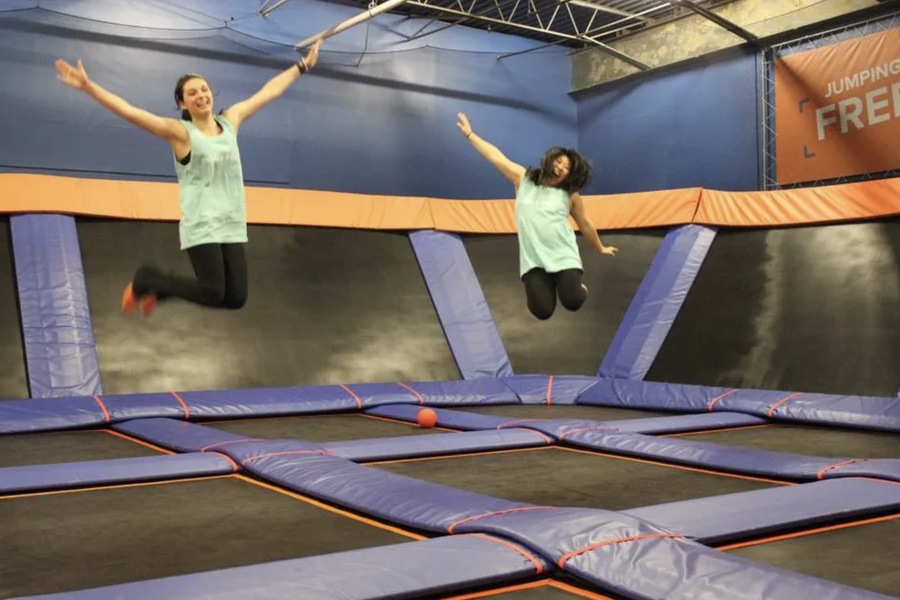In a world obsessed with fitness, recreation, and unique ways to burn energy, the trampoline holds a special place. But its history, transformation, and eventual ubiquity in American backyards are stories woven with innovation, athleticism, and culture. This article dives into the trampoline’s intriguing evolution, explores its significance in modern recreational culture, and highlights its impact on indoor trampoline facilities and home setups.
Origins: A Leap Back in Time
The trampoline traces its roots to Inuit cultures, where individuals used walrus skins as springboards during celebrations and ceremonies. This primitive yet innovative use of elasticity fascinated spectators and demonstrated the human desire to defy gravity, even temporarily. Fast-forward to the early 20th century, the modern trampoline was born out of an experiment by George Nissen and Larry Griswold in 1934. The duo, inspired by trapeze artists using safety nets to perform flips, developed a portable bouncing device primarily for gymnasts and acrobats.
The name “trampoline” derives from the Spanish word “trampolín”, meaning a springboard, a nod to its acrobatic roots. Initially, trampolines served professional purposes—training astronauts, honing gymnast skills, and aiding military pilots in spatial orientation drills. However, its recreational potential wasn’t fully realized until much later.
The Trampoline Boom in American Backyards
In post-World War II America, a cultural shift toward leisure and recreation birthed suburban neighborhoods that embraced accessible family entertainment. The trampoline transitioned from a professional apparatus to a recreational staple, becoming a symbol of suburban prosperity. During the 1960s, sales soared as manufacturers introduced affordable, safe, and compact models.
Despite its popularity, trampolines often raised safety concerns. Early models lacked proper enclosures, making injuries a frequent occurrence. By the late 20th century, safety innovations, such as net enclosures and padded springs, mitigated these risks, further cementing their place in American backyards.
Today, more than 3 million trampolines are sold annually in the United States, with the industry valued at approximately $2.1 billion globally in 2023. This growth highlights the trampoline’s enduring appeal as a source of fun, fitness, and connection for families.
Indoor Trampoline Facilities: A Modern Evolution
While backyard trampolines reign supreme, indoor trampoline parks have revolutionized the experience. Since the first indoor trampoline park, Sky Zone, launched in 2004, the industry has exploded, with over 1,500 parks worldwide as of 2023. These parks cater to diverse demographics, offering activities ranging from dodgeball to aerial stunts.
The rise of indoor trampoline facilities reflects broader trends in entertainment and fitness. A growing number of individuals seek alternative, engaging workout options. According to a 2022 report by the International Association of Trampoline Parks (IATP), these facilities witness an annual growth rate of 15%, proving their widespread appeal.
Indoor trampoline activities go beyond mere recreation—they are now marketed as low-impact cardio workouts. NASA research supports this claim, stating that 10 minutes on a trampoline is as effective as 30 minutes of running, providing an efficient and joint-friendly way to stay fit.

The Trampoline’s Role in Health and Fitness
The trampoline’s significance in fitness cannot be overstated. For children, it develops motor skills, balance, and coordination. For adults, trampolining improves cardiovascular health, boosts lymphatic circulation, and strengthens muscles. According to a study published in the Journal of Applied Physiology, trampolining improves oxygen consumption by 68% more than traditional jogging.
Furthermore, trampolines have therapeutic applications. Pediatric therapy centers frequently use them to assist children with sensory processing disorders, autism, and ADHD. These benefits, coupled with the trampoline’s inherent fun factor, make it an appealing choice for a wide audience.
Cultural and Technological Shifts
Trampolines are now more than just recreational tools; they are social media stars. Platforms like TikTok and Instagram are flooded with trampoline tricks and challenges, redefining their cultural relevance. Technological advancements have also made trampolines more innovative. Smart trampolines equipped with sensors and fitness trackers now integrate digital interactivity with physical activity, appealing to tech-savvy users.

Challenges and the Road Ahead
Despite their popularity, trampolines face challenges. Safety remains a top concern, with the American Academy of Pediatrics (AAP) advising caution in unsupervised use. Common injuries include sprains, fractures, and concussions, often arising from overcrowding or improper usage.
To address these issues, manufacturers continue to innovate, introducing enhanced safety features and stricter guidelines. Moreover, public awareness campaigns advocate for responsible trampolining practices, ensuring this beloved pastime remains enjoyable and safe.
Conclusion
From its modest beginnings as a tool for acrobats to its modern-day status as a backyard and indoor sensation, the trampoline has leaped its way into the hearts of millions. Its unique ability to combine fun, fitness, and therapy ensures its relevance in a constantly evolving world. As indoor trampoline facilities grow and smart technology integrates with traditional models, the trampoline’s legacy continues to expand. Whether bouncing in your backyard or at an indoor trampoline park, this invention has proven that sometimes, life is best experienced with a leap of faith—quite literally.

Soccer lover, vegan, DJ, Saul Bass fan and fullstack designer. Working at the crossroads of art and sustainability to craft delightful brand experiences. Let’s design a world that’s thoughtful, considered and aesthetically pleasing.
